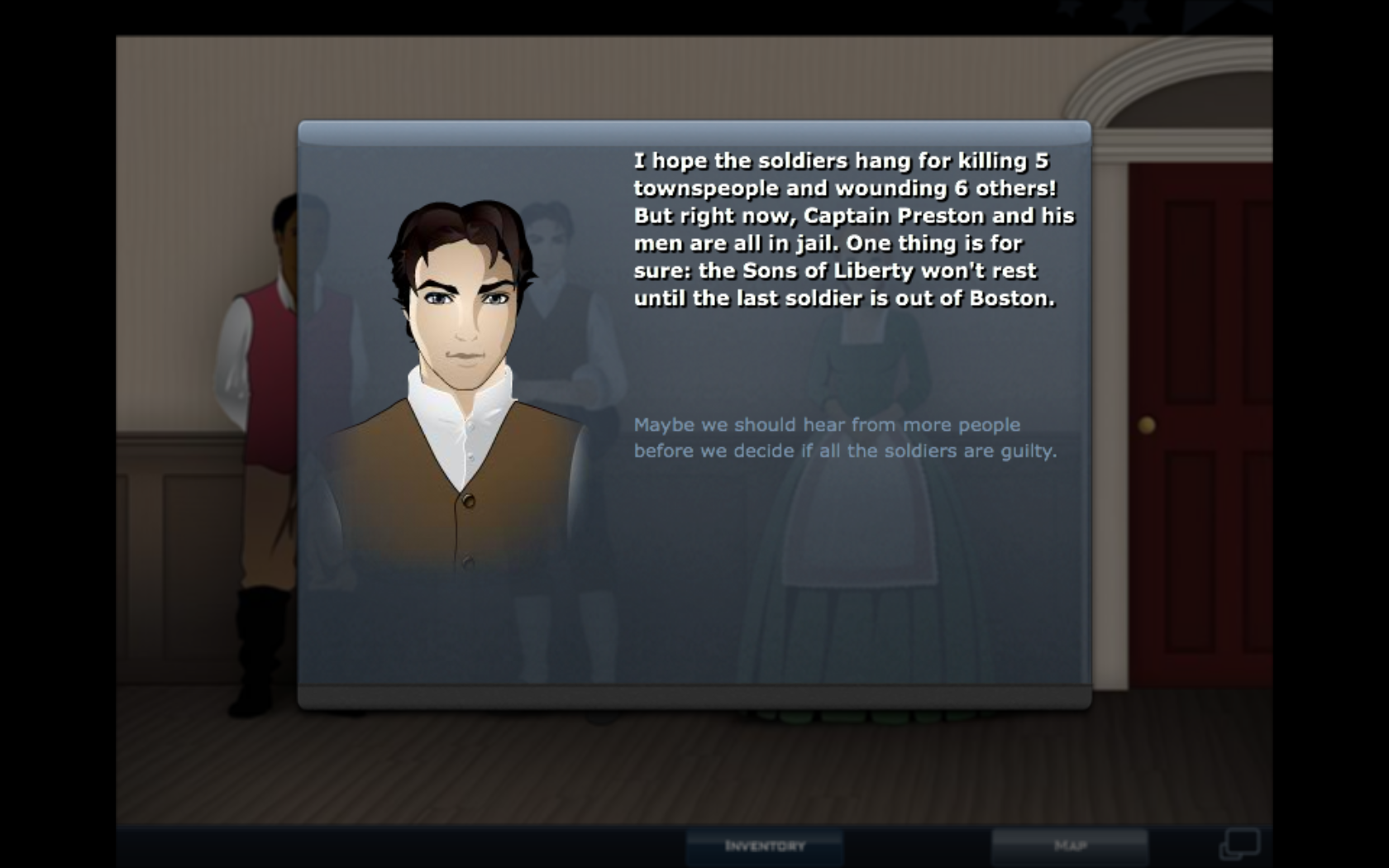Introduction
Mission US is a point and click adventure game produced by Thirteen with funding from the Corporation for Public Broadcasting and the National Endowment for the Humanities where you take the role of an apprentice boy during the start of the American Revolution.
Below is a detailed analysis of this game roughly following Brian Winn's1 Design/Play/Experience framework, including:
Learning
Storytelling
The story of Mission US is that of the early
American revolution in Boston, as seen through the eyes of Apprentince
Printer Nathaniel Wheeler. Through the player's choices, he decides
which side to support and experiences the revolution. The story is a
large portion of the learning goals, and supports them very well.

Gameplay
Mission US is a point and click adventure game with a few mini games. The main game play involves moving around the city and having conversations with people through dialogue options. The player chooses whether Nat is a patriot, tory or neutral using this mechanic. This also allows for the collecting of the vocabulary words. While the choices of the player have no effect on the greater story, the revolution, they do impact what sort of participation in the revolution Nat Wheeler has. There are also two minigames that are unlocked through play. The first is Pennywhistle Hero, a Guitar Hero style game where students can play revolutionary era songs on a pennywhistle. The second is Think Fast! which is a vocabulary game where the student fills in the blank in a sentence to prove their understanding of the vocabulary.
User Experience
The interface is very simple to use, being comprised
of point and click elements that either give the player information
about the colonial lifestyle or further the game through dialogue or
actions.
During the Pennywhistle Hero minigame, the player uses the keyboard to
play the proper notes on the pennywhistle to play patriotic
songs.

Technology
Mission US was implemented using Flash. This seems to be the correct solution, since the game is meant to be playable in classrooms and should be able to run on any computer with an internet connection. In their FAQ section, they also have instructions to contact them for another version that can be played without the internet. The only downside is that Mission US does not run properly on a computer with IE6 or older,which many school computers are running.
Assessment
While there don't appear to be any formal assessments of Mission US, a statistic stuck out during a search. According to thirteen.org, prior to the release of this game studies showed that only '17% of eighth graders performed at or above the proficient level in American History.' This statistic could then be compared to a sample set of students who have played the game to see if the percentage is increased. They could also compare to other methods of learning history such as Where in Time is Carmen Sandiego? or the Magic Tree House book series.<
Conclusion
With episode 2 scheduled for release in the spring of 2011 and a very avid fanbase of students, teachers and parents, Mission US seems to be a very successful educational game. There is a clamour on their forums for more games like this, more chapters, and most interestingly, for games like this for adults. I think that Thirteen and Electric Funstuff succeeded wildly with this game.

